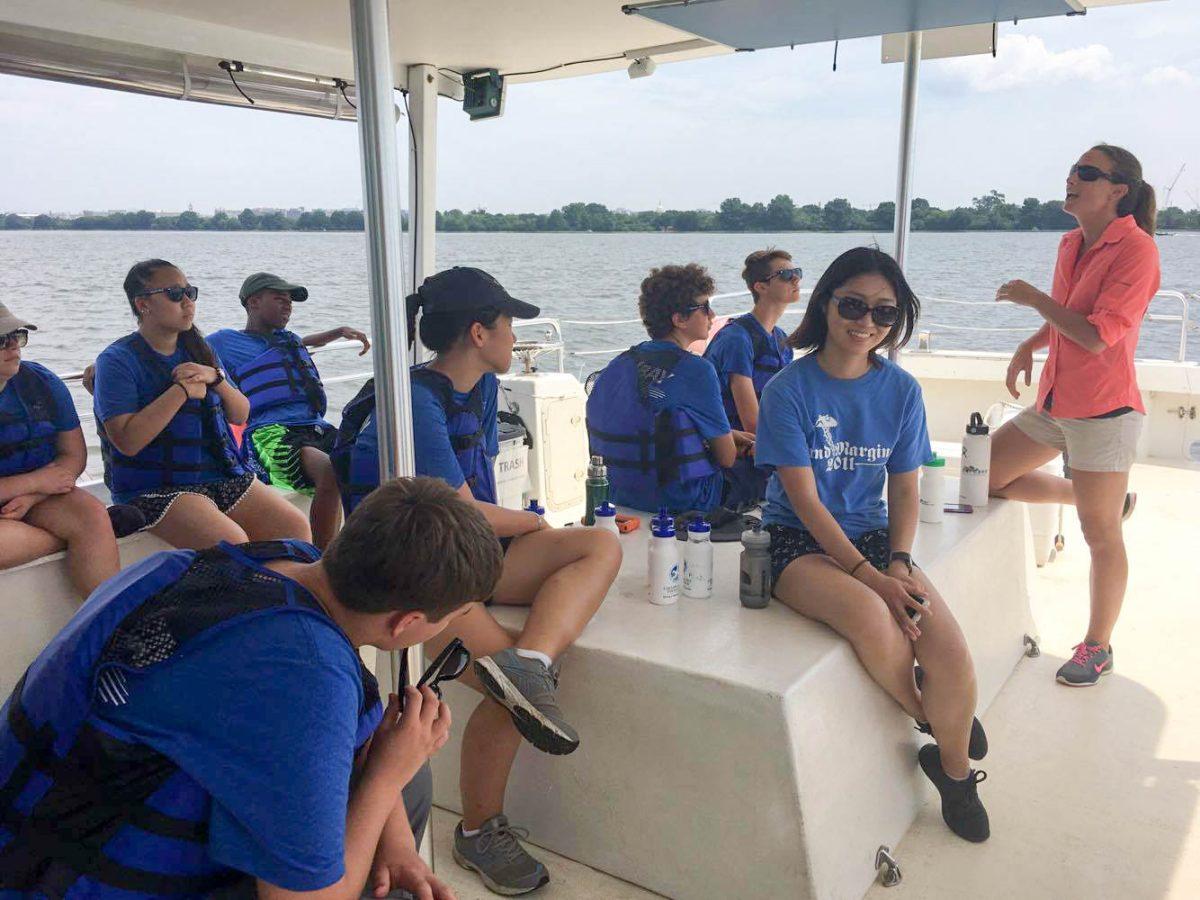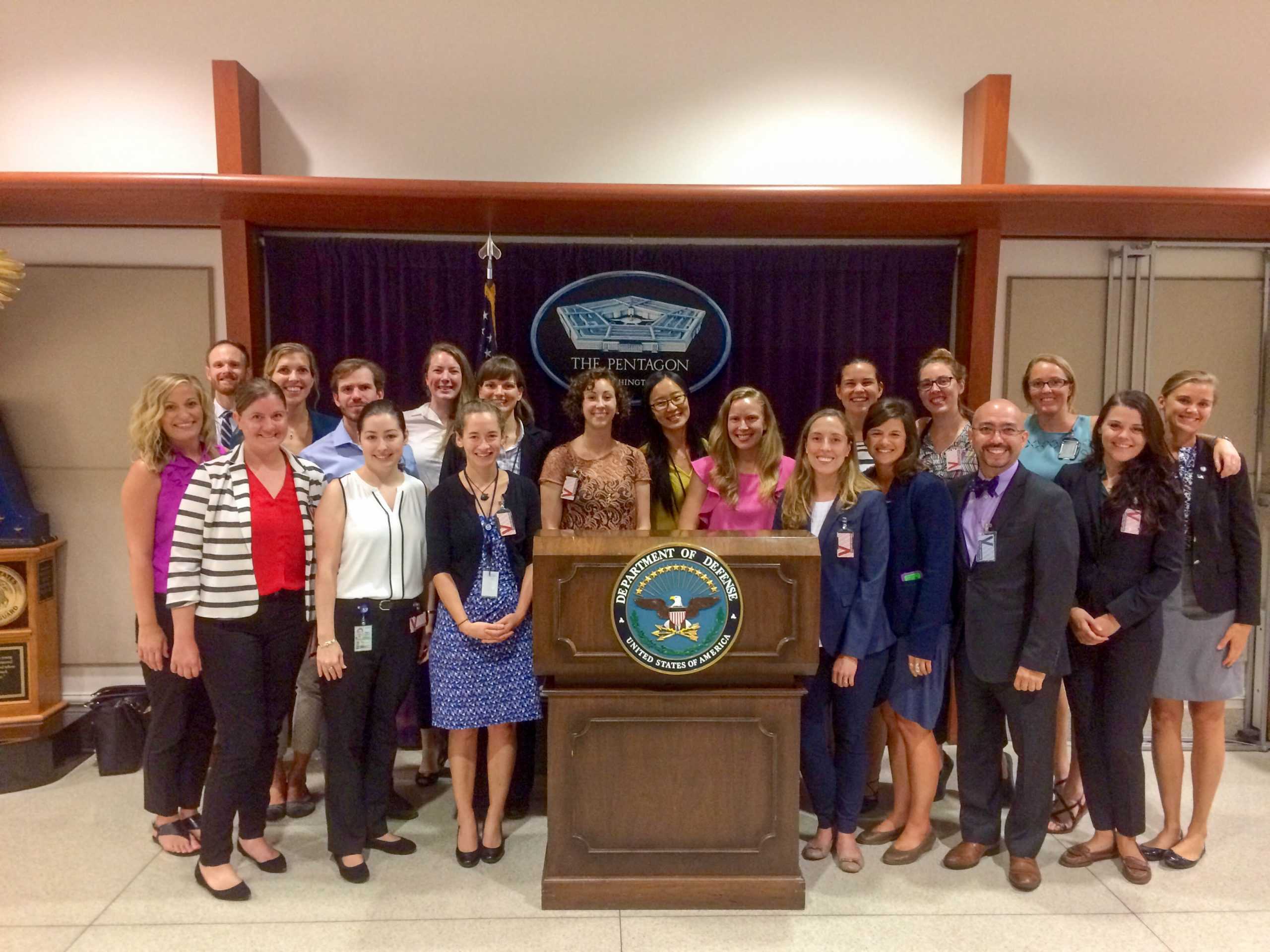Sitting in her office, Texas Sea Grant director Pamela Plotkin thought back to 1994 and the experience that ultimately shaped her career.
“There were no barriers or obstacles in my way,” Plotkin said. “I was allowed to get involved in just about anything I wanted to be involved in when I got to my fellowship opportunity, and that’s the experience most fellows have when they get there.”
The Sea Grant Knauss Fellowship, established in 1979, is for any graduate and doctoral students who are close to or have completed their degree and are interested in ocean, coastal or Great Lakes resources. The program will lead them to offices that affect legislative or executive national policy while completing their fellowship in Washington, D.C. The fellowship’s namesake, John A. Knauss, was one of Sea Grant’s founders and a National Oceanic and Atmospheric Association (NOAA) former administrator.
Plotkin said Knauss’ vision was to provide early career professionals with experience in government and public policy.
“We’re indebted to him and grateful for his vision because this is a program that has not just provided experience and opportunity to thousands of people, but has also helped federal agencies and congressional offices gain real great experience from the people who worked in these positions,” Plotkin said. “It’s really an opportunity that helps in two directions — the people who receive fellows and the fellows themselves all benefit from the opportunity.”
The fellowship is crafted to provide an intensive real-life experience to top students interested in national policy in relation to the oceans and Great Lakes, according to Plotkin.
“The fellowship program is meant to bring the best and the brightest from each of the coastal and Great Lake states to Washington, D.C. and provide them with a marine policy experience,” Plotkin said.
When the fellowship was established in 1979, many federal laws had been put in place the decade before such as the Clean Air Act of 1969. This time period is often known as the beginning of the environmental movement in the United States.
“I think the importance has been at multiple levels,” Plotkin said. “For the Sea Grant network, this fellowship experience has given us an opportunity to educate early career professionals about the Sea Grant program and about what we do in each of the coastal states and the Great Lake states. We get to share some of the impacts and accomplishments that we have in our states with our fellows and they bring that knowledge with them when they go up to Washington, D.C.”
Sepp Haukebo, Class of 2013 and manager of private angler management reform for the Environmental Defense Fund, was a Knauss Fellow. He works directly with anglers and with regional and national leaders. A fellow graduate student in his lab was working with NOAA in Washington, D.C. and encouraged him a few years before he finished his master’s to apply to the fellowship.
“I never thought I would be interested in policy,” Haukebo said. “Most folks that are going [the] science route either want to be out in the field out collecting data or they want to be doing research or writing papers or teaching classes.”
Haukebo said the year the fellowship takes place is comparable to a boot camp in everything related to policy in marine conservation.
“It’s almost like getting a master’s on it’s own,” Haukebo said. “It’s a year long crash course in everything from running an organization on the administrative side, how to run a grant process – it’s different for everybody.”
Beyond the variety of skills the fellowship can provide, Haukebo said there are many benefits that come from becoming a Knauss fellow.
“There’s a few really big things that come out of the fellowship,” Haukebo said. “One is that it takes you from a very academic standpoint in your master’s or Ph.D. to the basic 9 to 5 … You’re working on anything you could find yourself doing at a federal agency. The other huge benefit is growing your network.”
Haukebo said there have been fellows from a variety of backgrounds that apply to this fellowship.
“Don’t rule yourself out based on the type of degree you are getting, other than the fact that you have to be pursuing a graduate degree,” Haukebo said.
Mridula Srinivasan, chief of the protected species science branch in NOAA’s office of science and technology located in Silver Spring, Maryland, was a Knauss fellow in 2009 in the office of NOAA Research – International.
“The whole job was to try and establish research collaborations with different countries with a focus on climate science research and oceanographic research,” Srinivasan said. “That was really good because this was almost like taking up a new job or a professional position and I was treated like almost any other staff member of the office.”
This experience is what Srinivasan said helped launch her professional career, rather than being a researcher or graduate student. It also helped her build a network in her field, making contacts she can still count on to collaborate with any research she is working on.
“In terms of experience, I think it was just wonderful,” Srinivasan said. “It really helped to build my skill set, my knowledge of climate science… but also opening me up to these amazing climate scientists and oceanographers who were working for NOAA but also internationally.”
Part of her fellowship included international travel, during which she learned how to initiate and continue collaboration at an international level with people from different cultures and perspectives.
“It really prepares you to be cool, confident, prepared but also be assertive, so that was something that’s really awesome about that experience,” Srinivasan said. “It really helped me understand how NOAA works but also how international agreements, diplomacy and collaboration can happen, so that was pretty neat and different from most fellowships.”
Srinivasan recommends that fellows remain clear on what they want to do while in the fellowship and after it is completed, but also work to expand their knowledge and skills.
“This one year allows someone to experience something totally different and that’s great,” Srinivasan said. “Do something that you’ve never done before. Build on your skills, diversify, rather than just repeating the same thing over and over again.”
Plotkin said this opportunity can open many doors for networking and experience.
“People want to work with them, people want to involve them in different things, they get exposed to just so many different aspects of the federal government that it’s kind of like being a kid in a candy shop,” Plotkin said. “You really have so much to choose from and you’re overwhelmed with the choices and opportunities that are there for you. It’s unbelievable.”
To learn more about the John A. Knauss fellowship, visit http://seagrant.noaa.gov/Knauss. Applications for the 2019 fellowship are open until April 6, 2018.
From the coast to the capitol
February 4, 2018
Photo by Provided
The Knauss Fellowship gives graduate and Ph.D. students the chance to broaden marine knowledge outside of the classroom.
0
Donate to The Battalion
$2065
$5000
Contributed
Our Goal
Your donation will support the student journalists of Texas A&M University - College Station. Your contribution will allow us to purchase equipment and cover our annual website hosting costs, in addition to paying freelance staffers for their work, travel costs for coverage and more!
More to Discover











